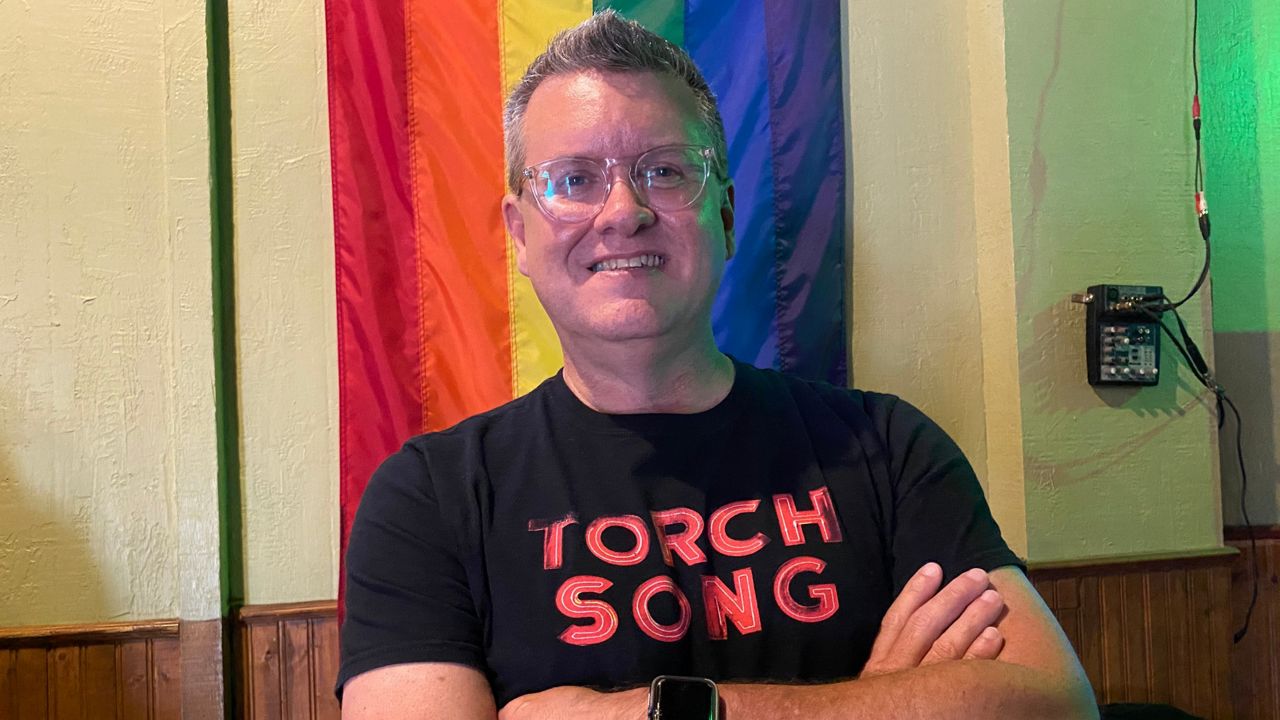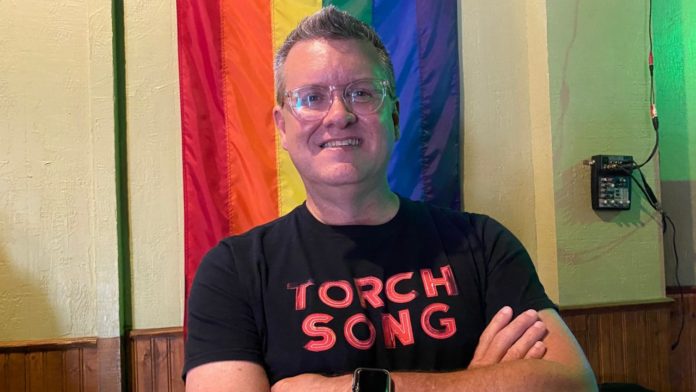
FORT WORTH, Texas — As employees watched flames engulf the bar they had just cleaned and closed down for the night, few understood the glowing embers in front of them represented the end of an era. The ash pile of the Rainbow Lounge, Fort Worth’s most iconic gay bar and an epicenter of the town’s then-burgeoning “gayborhood,” took with it painful and joyous memories of a gay scene the city hasn’t been able to replicate since.
In 2009, the Rainbow Lounge was the setting for a national news story. Local police and TABC agents raided the then recently-opened bar on the 40th anniversary of the raid at the Stonewall Inn in Greenwich Village, which set off the Stonewall Riots and gave birth to the modern gay rights movement. In Fort Worth, Police made several arrests for public intoxication, and one customer suffered severe brain and head injuries.
The timing of the raid incensed the local gay community and its supporters. The event galvanized a population that had long faced persecution and fought to integrate. A Dallas filmmaker made a documentary about the raid and resulting dialogue with the city and police the resulting protests sparked.
When the Rainbow Lounge burned, the number of gay bars in the city was already comparatively low. Back in the early ’80s, the town boasted nearly 20 gay bars. By 2017, there were only about six or seven in Tarrant County, and most of them were concentrated in a small corridor just south of downtown at the cross-section of Jennings and Pennsylvania avenues. Now, there are even fewer places scattered throughout the city.
Todd Camp — a local gay rights activist, founder of former artistic director and executive director of Q Cinema, which produces the Fort Worth Gay and Lesbian International Film Festival, Fort Worth’s first and only gay film festival — said the lack of local gay bars isn’t necessarily a bad sign for the city.
“The gay community is the dog that caught the car,” he said. “We wanted inclusion — to be part of the bigger world at large — and we got it. You can walk into any bar in the city of Fort Worth on any given night and find gay people in it being openly gay, kissing, being emotional, engaging in public displays of affection with no fear of repercussions because, for the most part, people feel comfortable.”
Camp has been researching Fort Worth’s gay history dating back to the turn of the 20th Century for a book he’s writing. According to his data, there have been more than 100 gay bars in Fort Worth and nearby Arlington, with 651 Club the longest-tenured at about 20 years, and a club called Trix lasting only one weekend.
When prohibition ended, gays and lesbians were forbidden from drinking in bars. Businesses could lose their liquor licenses, or they could face shut down if they served the LGBTQ community. In the ’50s, mafia-owned speakeasies on Fort Worth’s notorious Jacksboro Highway stepped in to serve the community — with watered-down, overpriced drinks.
Other gay clubs opened despite police crackdowns, Camp said. Owners employed a lookout person who would flash a red light when police showed up to the clubs.
“All the gay men would grab a girl and they would start dancing so that when they cops came in, they wouldn’t be arrested,” he said.
Homosexuality, he said, only really became taboo in the ’50s and ’60s. Though the gay community wasn’t integrated then, it lived alongside the heterosexual community peacefully.
“At the turn of the century and into the ’20s, drag acts and female impersonation was just wildly popular,” Camp said. “No one really had a problem with gayness. It was strange. It was different. But it was a world that didn’t bother them. That was always interesting to me, and that’s an area we don’t really know anything about.”
One of the reasons the Fort Worth gay bar scene has been slow to grow since the 1980s is the lure of Dallas’ thriving gay scene drawing away people — particularly young people who prefer a more up-tempo dance scene rather than Fort Worth’s more languid come-as-you-are vibe.
“The whole Dallas versus Fort Worth kind of thing dates back to the ’50s and ’60s,” Camp said. “There was a parking lot downtown that was infamous, because that was where gays would meet and they would all park and then drive to Dallas bars. Dallas always had a much more thriving gay scene.”
Countless publications have spent wells of ink opining the death of the gay bar in general. San Francisco recently lost The Gangway, that city’s oldest, longest-running gay bar. New York has seen many clubs shutter, such as the legendary leather bar The Rawhide — open since 1979, long-tenured dance club Splash, G Lounge, and others. Los Angeles said goodbye to The Palms, Circus Disco and The Other Side.
Locals around the country say gentrification is to blame, and the LGBTQ community usually augurs coming development. The cycle is now a familiar one: Gays move into a downtrodden area, build it up, create a community, and developers swoop in and price them out of the neighborhood.
While the area surrounding the Fort Worth gayborhood has developed at the pace of the Game of Thrones opening, the buildings and bones of the cross-section are still mostly intact. Newly opened Liberty Lounge, though not a gay bar, is very LGBTQ-friendly. It has opened in a spot that has traditionally been a station of the cross for local LGBTQ folks. The longest-tenured gay bar in Fort Worth isn’t in the old gayborhood. Club Changes occupies a prominent space on East Lancaster Avenue in East Fort Worth.
“I still firmly believe that the role of the gay bar is still important, because I still believe that the coming out process is painful,” Camp said. “It’s hard, no matter how many role models there are, no matter how many television shows and movies affirm you as a person, it still hurts. It’s still scary. You still feel alone. You still feel abandoned by the rest of the world. You still feel like an outcast.
“So the role of the bar was, I can go to this place where everybody is like me, and I will be safe and it will be OK.,” he continued.








